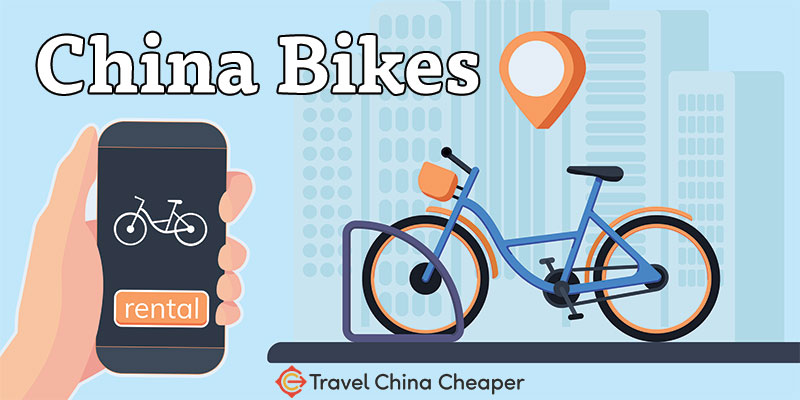Using Smart Bike Lane Apps for Safe Cycling in China
Here at jusha.travel, we love sharing tips to make your China journey unforgettable! One of the most authentic and exciting ways to explore China’s dynamic cities is by bicycle. The rise of bike-sharing platforms has revolutionized urban mobility, making cycling more accessible than ever. But with bustling streets and intricate alleyways, ensuring your safety is paramount. That’s where **Smart Bike Lane Apps** come into play. This post will delve into how these innovative applications, combined with an understanding of

The Two-Wheeled Renaissance: Bike-Sharing in China
China’s love affair with bicycles is legendary. Once dubbed the “kingdom of bicycles,” the nation’s streets were a bustling tapestry of two-wheeled commuters. While cars rapidly transformed the urban landscape, a new revolution has brought cycling roaring back to life: bike-sharing. Companies like Mobike and Hellobike have flooded cities with millions of brightly colored bicycles, easily accessible via smartphone apps. This resurgence has made cycling a viable and popular option for short-distance travel, offering flexibility and an environmentally friendly alternative to traditional transport. As noted by VOA News, these “new bike-share apps in China create bike ‘revolution’,” profoundly impacting urban mobility. The convenience is undeniable: simply locate a bike on your app, scan a

Navigating Safely: The Role of Smart Bike Lane Apps
While the accessibility of bike-sharing is fantastic, navigating China’s sometimes chaotic urban environments on two wheels requires a strategic approach. This is where
One of the most critical aspects is real-time navigation. Imagine having an app that not only tells you where to go but also guides you along dedicated bike lanes, alerts you to potential hazards like construction or heavy traffic, and even suggests quieter, more scenic routes. While dedicated bike lanes are still being developed in many areas, these apps can leverage existing infrastructure and user-generated data to provide the safest possible path.
For instance, major
Furthermore, future iterations of
* **Real-time Hazard Alerts:** Imagine an alert popping up on your screen warning you of a sudden road closure or a large pothole just ahead.
* **Optimal Route Planning:** Beyond just “fastest,” these apps could calculate routes based on “safest” or “most scenic” criteria, perfect for tourists.
* **Community Reporting:** Allowing users to report unsafe conditions or suggest better paths, contributing to a collective knowledge base for

Case Study: Gaode Map’s Innovative Cycling Features
When it comes to
This innovative map isn’t just about showing you bike lanes; it’s a comprehensive platform for cyclists. It offers:
* _Premium Cycling Routes:_ Suggesting not just the fastest, but often the most enjoyable and safest routes for cyclists.
* _Real-time Navigation:_ Leveraging the sophisticated Beidou satellite navigation system (China’s own GPS equivalent) to provide highly accurate turn-by-turn directions.
* _Social Interaction:_ Cyclists can share their routes, tips, and experiences, fostering a sense of community.
* _Activity Tracking:_ Allowing users to monitor their distance, speed, and calories burned – features familiar to many fitness apps.
This integration of detailed route recommendations and real-time safety alerts showcases how dedicated

Practical Tips for Safe Urban Cycling in China
Even with the best
* Understand Traffic Flow: Chinese traffic can sometimes appear chaotic to new visitors. While the apps provide guidance, always be aware of your surroundings. Vehicles often turn without signaling, and pedestrians may not always follow designated crossings.
* Stick to the Right: Cyclists generally keep to the right side of the road or in designated bike lanes where available.
* Be Visible: Especially at night, wear bright clothing. While bike-sharing bikes often have lights, consider bringing your own portable light for extra visibility.
* Anticipate Doors: When cycling beside parked cars, be mindful of opening doors.
* Use Your Bell: A common practice in China is to gently ring your bike bell to alert pedestrians or other cyclists to your presence.
* Check Your Bike: Before unlocking with a
* Helmet Consideration: While not widely enforced, wearing a helmet is always recommended for your safety.
* Integrate with Local Apps: Beyond cycling-specific features, familiarizing yourself with other
The rapid transformation of China’s bike-sharing landscape, as highlighted by the World Economic Forum’s article on how a bike-sharing app is “transforming travel,” underscores the importance of these safety considerations.
Embracing the Future of Cycling in China
The integration of
So, the next time you visit China, download those essential
We hope this guide inspires you to hit the streets on two wheels with confidence! What are your experiences with cycling in unfamiliar cities? Share your thoughts and tips in the comments below! For more exciting travel ideas and practical advice for your journey, be sure to visit jusha.travel. We’re always here to help you plan an unforgettable trip to China.

